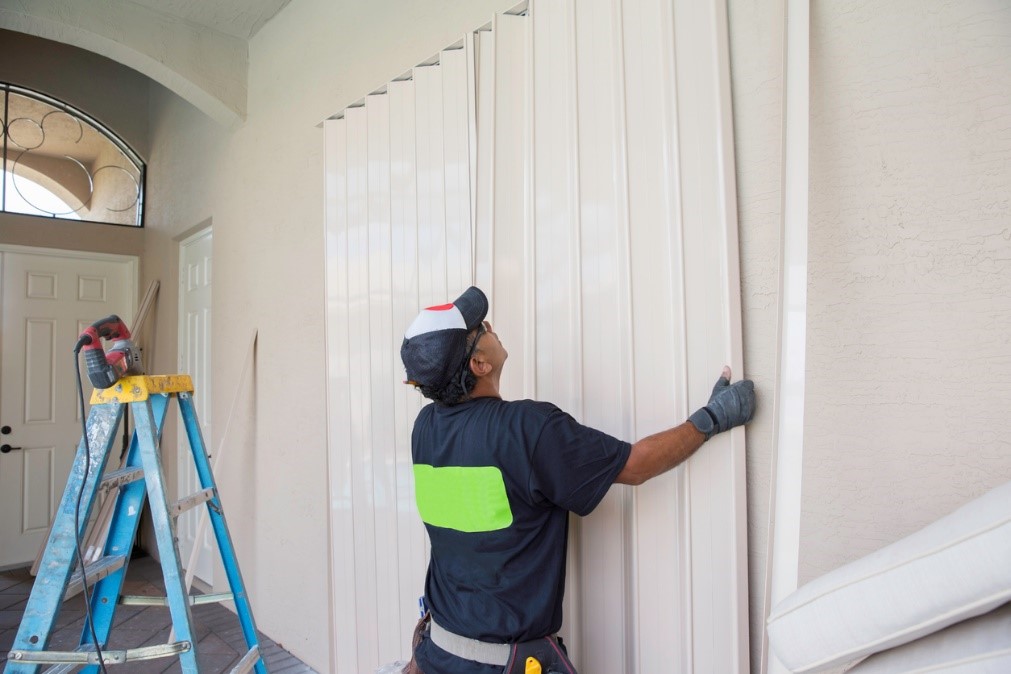With hurricane season starting June 1, it’s time to dust off your HOA’s disaster preparedness plan. Uses this checklist to make sure you’re as prepared as you should be to weather the big one.
The primary responsibilities of an HOA include protecting the safety and well-being of its community and residents under a wide range of circumstances. Having a disaster plan in place that spells out everyone’s responsibilities can bring peace of mind to residents and management both.
Hurricane season runs from June 1st to November 30th. On average, the hurricane season includes 12 named storms, six hurricanes, and three major hurricanes, according to the Insurance Information Institute. Lowering your guard simply because your area has gone years without a major hurricane is a prescription for disaster.
Creating a hurricane preparedness plan that outlines responsibilities and duties will save your community time and money, it can also reduce the physical and emotional distress residents experience before, during, and after a major disaster.
Preparedness checklist
Your HOA is already familiar with how to keep your community running smoothly on a day-to-day basis. Accomplishing that during a before, during and after a disaster requires advanced planning and management skills most of rarely use. So here are some tips we’ve culled from local disaster preparedness organizations, HOA associations and insurance providers to help you review your hurricane preparedness plan.
Before the storm
- Make plans: Create two plans; one for staff and one for residents. The staff plan should: name who is responsible for what; provide a checklist for securing the property; set a timeline for taking action based on storm progress; list emergency contact information for insurance providers, vendors, and staff; and establish a protocol for communicating with residents.
The plan for residents should include: recommendations for evacuation; suggestions for protecting their property; a summary of preventative measures the HOA will be taking; a reminder of what type of damages are the responsibility of the HOA; and a list of emergency management resources that may be helpful, such as shelters and disaster assistance information. - Document assets: Take and date photographs of all common areas, machinery and equipment, furniture and fixtures and make a spreadsheet that lists model numbers or item types. Call your insurance company to ensure coverage of all assets in the event of wind, rain, flying debris, and flooding. Ensure there’s no exclusion for named storms. Make copies or scan all relevant insurance documents and keep them in a protected area offsite, or upload them to the cloud.
Speak with Vendors: Ask service providers about their plans before and after a hurricane, including what arrangements they have made to fuel and protect their service vehicles. Ensure the pool company expects a flooded pool, have the landscaping service turn off all irrigation systems and determine availability for tree trimming before the storm and tree removal afterward. If you have a retention pond on the property, work with your service provider to ensure optimal drainage. - Secure property: Remove and store any patio furniture, unsecured planters, tennis court windscreens and nets, awnings, large hanging light fixtures and any other items that could become damaged or become flying debris. Pool furniture can safely be stored inside of the pool if you lack storage space, and stack sandbags in areas prone to flooding. Install hurricane shutters on common area buildings. If using plywood, have the sheets purchased, cut to size, and labeled before hurricane season.
After the storm
- Assess the impact: It’s crucial to evaluate the damage as soon as it’s safe to do so. Note that carbon monoxide poisoning, electrocution, and heat stress are among the significant hazards disaster recovery workers face in the immediate wake of a storm, according to the Centers for Disease Control. Have the HOA board’s designated representative check community buildings and common areas before driving around the community to check the status of streets and sidewalks. Make detailed lists and take photographs for insurance purposes, and so that you can inform vendors about what damages require repair.
- Inform residents: Keep the residents informed about damages, timeline, security measures, and progress. Also, share information about organizations that may help if they have needs outside of the HOA’s scope of responsibility; FEMA is one such resource, the Small Business Administration’s Office of Disaster Assistance is another.
- File insurance claim: If you need to file a claim, contact your insurance company as soon as possible, as claim settlement is typically on a first-completed, first-served basis. Meet the adjuster and provide all relevant information about damaged assets and necessary repairs. Plan to follow-up early and often. Consider assigning an assertive and detail-oriented team member the task of communicating with the insurance company. Remember that you don’t have to accept a settlement. Contact an attorney or a public adjuster in the event of a dispute.
- Review plan: After restoring essential services and ensuring the safety of the community and employees, reevaluate your plan and determine how to improve it. Learn from your mistakes and shortcomings to be better prepared in the future.
Facing a disaster can be a chaotic and frightening experience. However, being proactive and having a hurricane preparedness plan in place can prevent damage, alleviate stress, and enhance the reputation of your HOA board. Vendorsmart is a comprehensive vendor management platform that delivers real-time oversight on vital aspects of your business, including vendor sourcing, compliance management, and project bidding. Learn more about how we can help your HOA.
